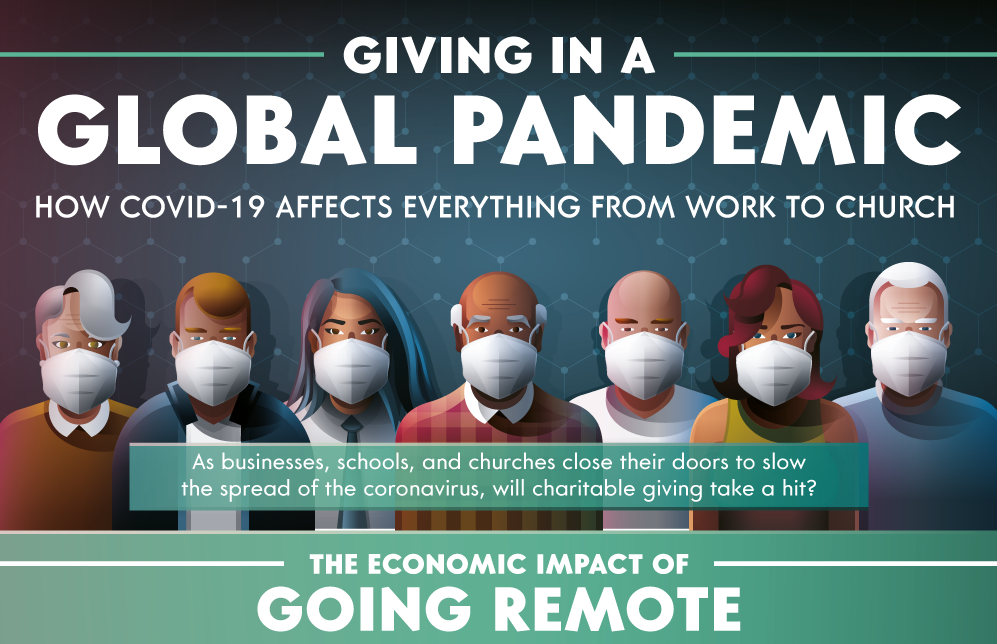We’ve been seeing many areas of our lives change since the outbreak of COVID-19, work, school, and social life being the notable showcases. Even houses of worship are feeling the pinch as in-person gatherings are no longer recommended. With everything in the economy being affected, how can people still give during the pandemic?
As of March 16, 2020, the U.S. government issued guidelines directing restaurants, bars, gyms, and schools to close. This includes venues where more than 10 people often gather. Restaurants were able to stay partly open for business by offering drive-thru and pick up. However, millions of Americans could be temporarily out of work or are working reduced hours.
- 3.2 Million cooks, bartenders, and servers
- 2.5 Million in arts, entertainment, and recreation
- 1.1 Million teaching assistants
Nonprofits are preparing for an influx of those looking for food, assistance, or other services. Maybe you’re thinking “Didn’t the government grant everyone a $2,000 check or some other assistance?” President Trump did sign a $2 Trillion stimulus bill, but it will take nearly a month for individuals to receive that money.
In the U.K. self-isolating is rising and food banks are dealing with a shortage of volunteers. Many have reduced hours or begun closing down since even donations have dwindled because of the purchase limits. Meanwhile, food banks in the U.S. are preparing for the same, switching to a drive-thru or mobile distribution model.
Epicenters of the outbreak have already seen a similar decline in donations and volunteers. Food organizations in Seattle receive 83% of their stock from grocery stores, and now that more shoppers are stocking up for themselves, their supply is severely restricted. Students who would have food from schools’ free or reduced lunch programs are now turning to the already quelched food banks.
Food isn’t the only commodity that is becoming scarce, donations to blood banks have fallen. With so many blood-drives and appointments canceled the Red Cross estimates they’ve lost 8,000 pints of life-saving blood. Regardless of Coronavirus, blood will be needed.
Congregations are meeting digitally being unable to meet in-person. Like many others, Churchome, a Christian megachurch, closed all its Seattle locations. In one week their app sign-up increased by 60% and virtual attendance to Sunday services went up by 23%.
People are also getting religion and joining congregations in droves. Harvest Christian Fellowship of Southern California, reported 1,400 people committing to Christianity and quadruple the attendees online. Lakewood church, another megachurch in Houston, now has 52,000 people attending digitally every week.
Most Americans believe charitable giving has a positive impact. In 2018,
- More than 3 in 5 gave to charity, with 38% of funds going to religious organizations
- More than 1 in 3 volunteered, with 36% working with churches or religious groups
- Bad news inspired more giving, with 41% giving in response to natural disasters
Religious groups have historically received the largest share of donations. Before the pandemic, almost 80% of congregations offered online giving and 46% offered a mobile app or text-to-give.
Now people are still giving, via digital avenues, which provides a way to give without being in-person, makes it more convenient, and helps people stay connected and keep growing in religiosity. Over half of all members are willing to give to their church digitally. Learn more about giving in a pandemic here!

This post originally appeared on Kivo Daily







 WebProNews is an iEntry Publication
WebProNews is an iEntry Publication